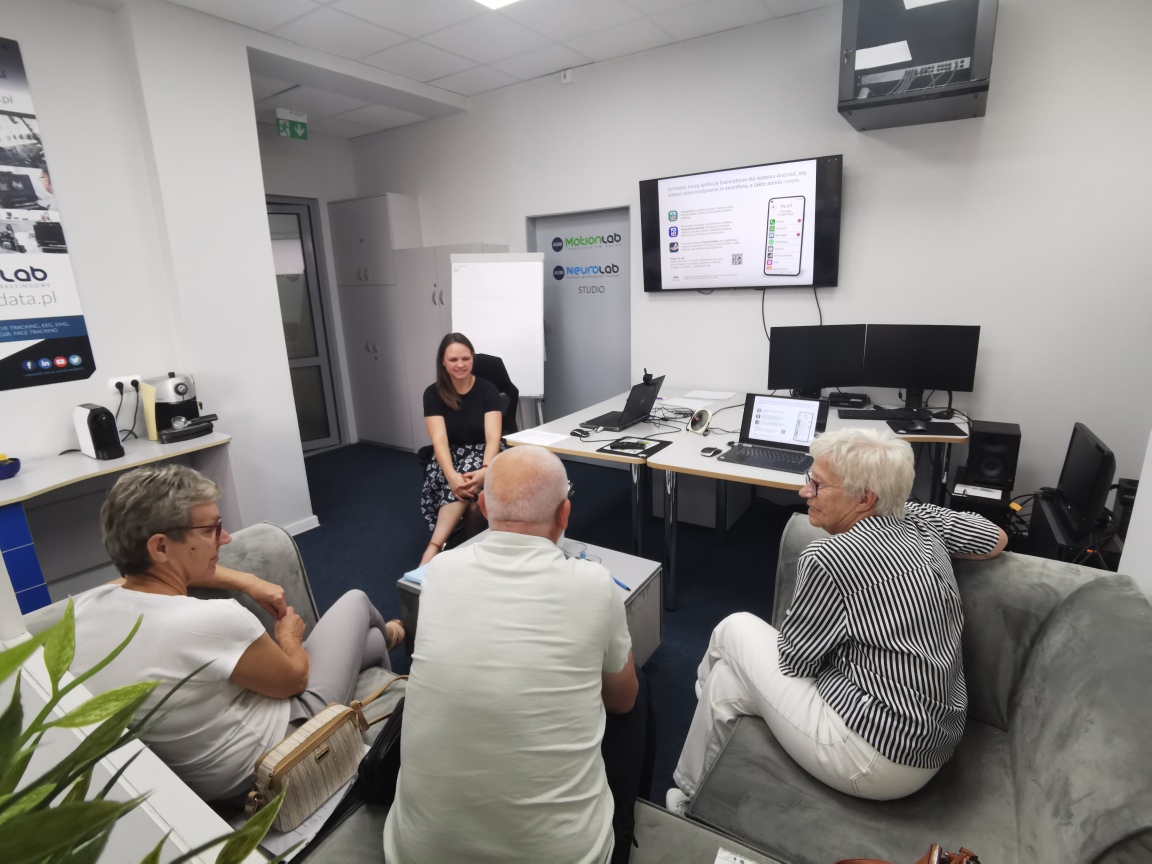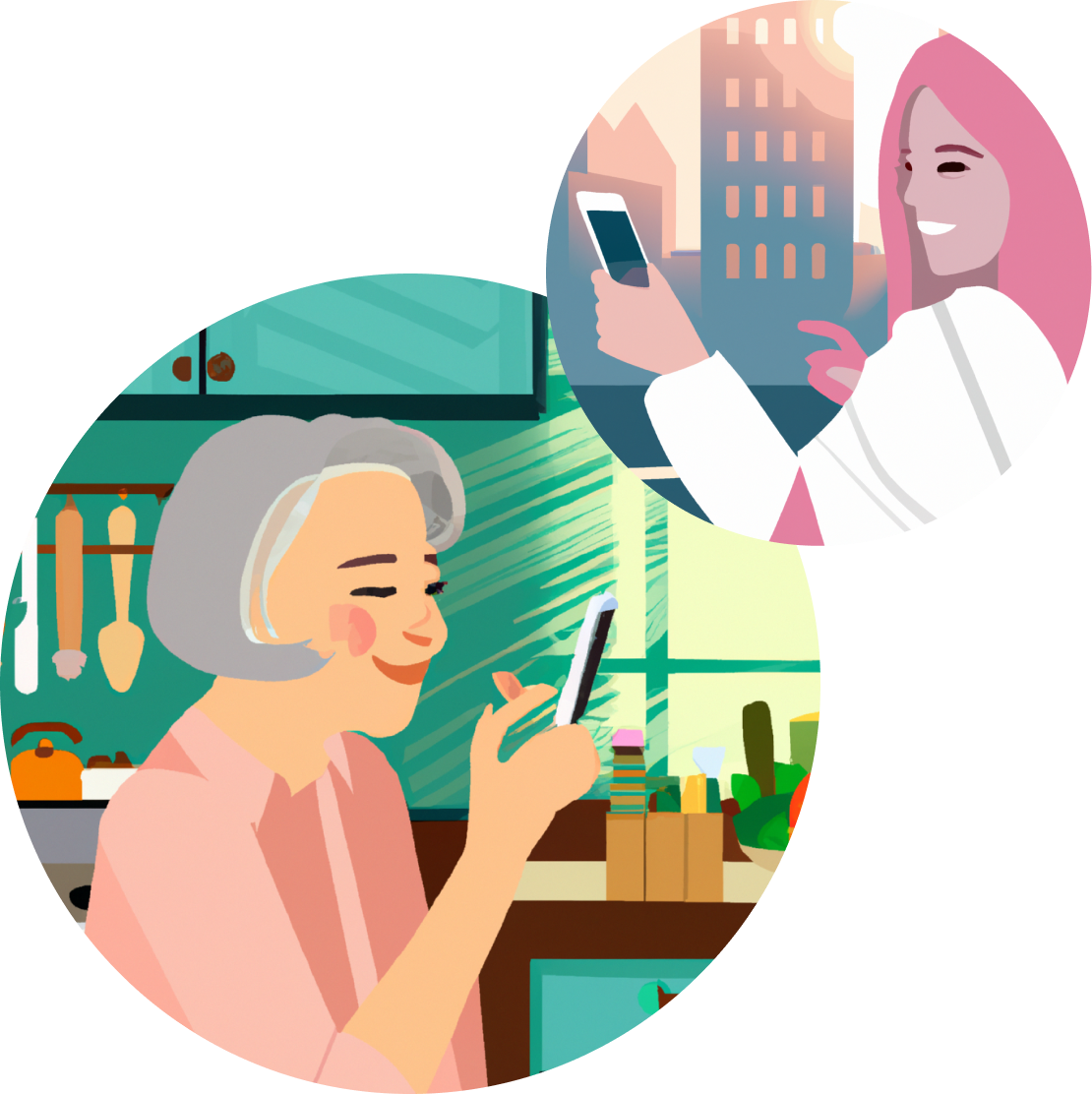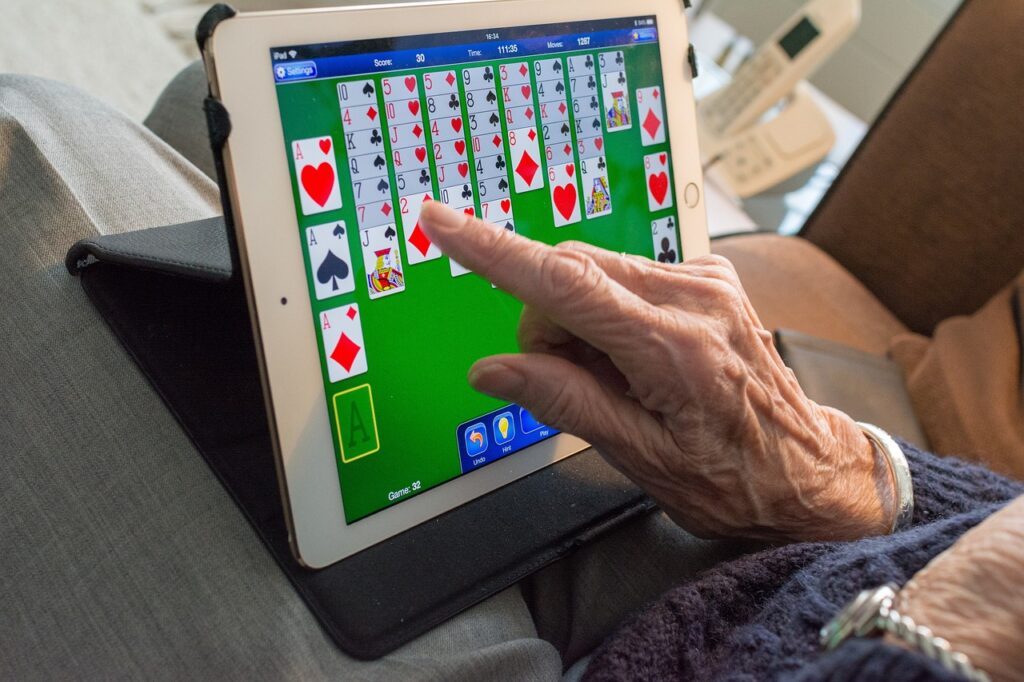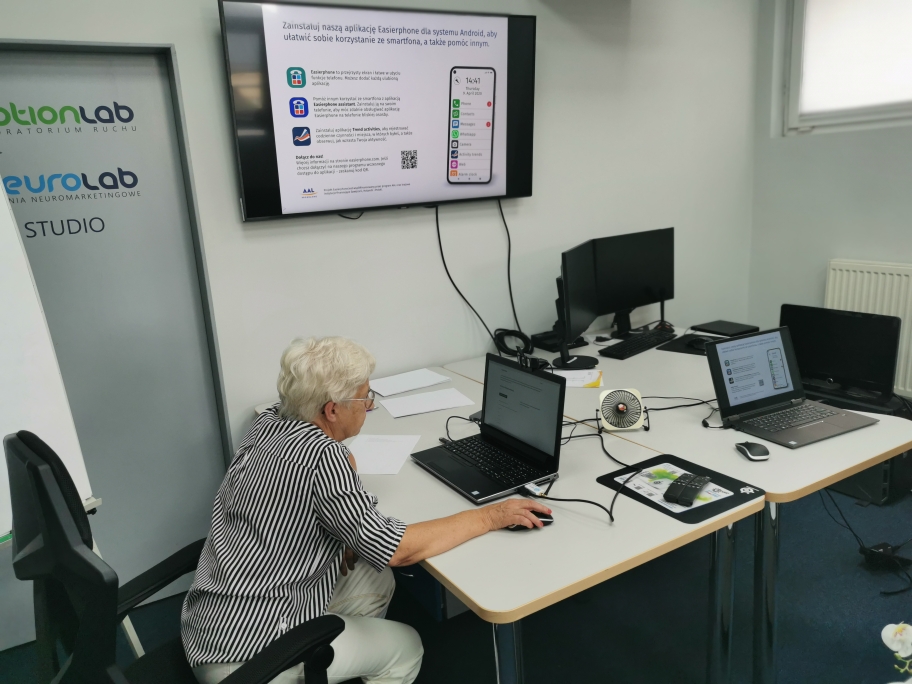Navigating Modern Waters: Seniors in Today's Labor Market
In an age marked by rapid technological advancements and shifting workforce dynamics, the role of seniors in the labor market has evolved. As demographics change and people are living longer, the landscape of senior employment is undergoing a transformation that warrants attention and understanding. This article delves into the current situation of seniors in the labor market, exploring the challenges, opportunities, and initiatives that shape their professional journeys.

Prolonged Careers: The New Norm
Gone are the days when retirement meant bidding farewell to the workforce. With increasing life expectancy and improved health, many seniors are opting to extend their careers. The concept of retirement has shifted from an abrupt end to a gradual transition, allowing individuals to continue contributing their expertise and skills to the economy.
Challenges Faced by Seniors
While seniors bring a wealth of experience to the table, they often encounter unique challenges in today's labor market. Ageism remains a significant barrier, as some employers harbor misconceptions about older workers' adaptability to technological changes or their ability to collaborate effectively with younger colleagues. Moreover, changing job requirements and skill demands can leave some seniors feeling inadequate or out of touch.
Upskilling and Adaptation
The modern labor market values adaptability and continuous learning. Seniors are recognizing the importance of upskilling to remain competitive. Many are embracing technology, enrolling in courses, and participating in workshops to enhance their digital literacy and acquire new skills. This proactive approach not only enhances their employability but also exemplifies the idea that learning knows no age limit.
Entrepreneurship and Flexibility
The gig economy and remote work have opened doors for seniors seeking flexible opportunities. Entrepreneurial ventures and freelance work allow seniors to capitalize on their expertise, set their schedules, and maintain a healthy work-life balance. Many are turning hobbies, passions, and lifelong skills into profitable endeavors, demonstrating that age is not a hindrance to innovation and creativity.

Promoting Inclusion and Diversity
Businesses are increasingly recognizing the value of diverse workforces, which include senior employees. Companies that embrace age diversity benefit from a broader range of perspectives and experiences, leading to enhanced problem-solving and creativity. Initiatives promoting inclusivity foster an environment where seniors can thrive, contribute, and continue making meaningful impacts.
Supporting the Transition
Government policies and community organizations play a pivotal role in supporting seniors' transition into the labor market. Initiatives offering training programs, mentorship opportunities, and incentives for hiring older workers bolster the confidence and readiness of seniors seeking employment. Collaborative efforts bridge the gap between generations and ensure that seniors are valued for their contributions.
A Paradigm Shift in Perception
The current situation of seniors on the labor market calls for a paradigm shift in societal perception. Seniors are not just workers seeking a paycheck; they are valuable assets with a wealth of experience, insights, and wisdom. The integration of seniors in the labor market reflects a society that appreciates the contributions of all age groups and values the opportunity to tap into a wellspring of knowledge.
Conclusion: A Multigenerational Workforce
The modern labor market is evolving into a multigenerational tapestry where each thread contributes to the vibrant whole. Seniors are an integral part of this diverse fabric, bringing history, wisdom, and unique skills that enrich the professional landscape. As the lines between retirement and continued engagement blur, seniors are making their mark, illustrating that age is no impediment to productivity, innovation, and the pursuit of new horizons.
Results of eye-tracking research on the Easierphone App
Eye-tracking research is a scientific method used to study and analyze eye movements and gaze patterns of individuals. It involves using specialized eye-tracking technology, such as eye-tracking glasses or monitors, to precisely measure and record where a person is looking, the duration of their gaze, and the sequence of their eye movements.

Eye-tracking research provides valuable insights into visual attention, perception, and cognitive processes. It helps researchers understand how individuals interact with visual stimuli, such as images, videos, websites, advertisements, and user interfaces. By examining eye movement patterns, researchers can uncover underlying cognitive processes, preferences, and behaviors.
The process of conducting eye-tracking research typically involves the following steps:
- Participant Preparation: Participants wear eye-tracking glasses or sit in front of an eye-tracking monitor, ensuring that the eye-tracking technology is accurately calibrated for their eye movements.
- Experimental Task: Participants engage in a specific task, such as viewing images, watching videos, or interacting with a digital interface. The task can be designed to test user experience, visual attention, information processing, or other relevant research objectives.
- Data Collection: The eye-tracking technology records the participant's eye movements, capturing data on where they are looking, the fixation duration (time spent looking at a specific point), saccades (rapid eye movements between fixations), and other eye-related parameters.
- Data Analysis: The recorded eye-tracking data is analyzed using specialized software and algorithms. Researchers examine gaze patterns, areas of interest, and visual attention metrics to draw meaningful conclusions and insights from the data.
- Interpretation and Findings: Researchers interpret the eye-tracking data and draw conclusions based on the patterns and trends observed. These findings can inform user experience design, marketing strategies, interface improvements, and various other applications based on the research objectives.
Results of eye-tracking research on the Easierphone App
As part of the biometric study, information regarding the visual activity of the participants on the Easierphone website (https://easierphone.com/pl/) was collected. The study employed the eye-tracking method, which allowed for obtaining information about the actions performed by the respondents on the website. Heatmaps and fixation paths were used to examine areas of the highest and lowest activity among the participants. By using fixation paths, it was determined how the participants' gaze followed step by step, and which areas of the website attracted their attention the most. Heatmaps also helped determine the intensity with which participants looked at specific elements of the website. The study allowed for recognizing users' preferences, needs, and expectations regarding the tool.

For each of the analyzed elements, the following were taken into account:
- Heatmaps - presenting the areas that captured the participants' gaze most strongly.
- Fixation maps - presenting the gaze path of the participants.
To complement the biometric research, a discussion workshop was also conducted where participants exchanged opinions, potential changes, and suggestions aimed at improving the Easierphone application website.
The research group consisted of 6 individuals aged 18 and above. It was diverse in terms of gender and age (four females and two males). It was divided accordingly based on age in order to present the study results (older and younger individuals).
The results of the research revealed very interesting conclusions, especially regarding the common perception of older vs. younger generations' behavior:
Easierphone Assistant App: Empowering Seniors with Remote Support and Privacy Control
Easierphone, the user-centric app designed to enhance the smartphone experience for seniors, introduces a groundbreaking feature—the Easierphone Assistant app. This auxiliary application enables users to seek remote assistance from trusted individuals while ensuring full control over their privacy.
In this article, we'll explore the functionalities of the Easierphone Assistant app, including accessing settings, inviting an assistant, and managing data access. Let's dive in and discover how Easierphone empowers seniors with remote support while prioritizing privacy.

Accessing Easierphone Settings
To access the Easierphone Assistant app, users can simply tap the wrench icon on the home screen of their Easierphone device. This action opens up the settings menu, providing users with various customization options and features. By tapping the wrench icon, seniors can conveniently access the necessary settings to utilize the Easierphone Assistant app.
Inviting an Assistant
Within the settings menu, users can choose the "Remote Assistance" option, which leads to the assistant management section. Here, users have the opportunity to invite a trusted contact to become their Easierphone assistant. By selecting "Invite an assistant" within the Remote Assistance settings, users can send an invitation to any contact from their contact list. This feature allows seniors to choose someone they trust to provide remote support, ensuring a personalized and secure assistance experience.
Managing Assistant Access and Privacy
Easierphone prioritizes user privacy and control, which extends to the Easierphone Assistant app. If users decide to remove their assistant, it effectively revokes the assistant's access to their Easierphone data. By removing the assistant, seniors can maintain control over their personal information and have peace of mind regarding data privacy. This feature empowers users to choose when and how their assistant can interact with their Easierphone device, enhancing overall privacy and security.
Seamless Remote Assistance with Privacy Control
The Easierphone Assistant app streamlines the process of seeking remote assistance for seniors. By leveraging trusted contacts, users can receive support and guidance from their chosen assistants without compromising their privacy. The controlled access ensures that the assistant can only view and interact with the device when explicitly invited, guaranteeing that seniors retain full control over their data and personal information.
The Easierphone Assistant app brings the power of remote assistance to seniors, allowing them to seek help from trusted contacts while maintaining control over their privacy. By accessing the Easierphone settings and inviting an assistant, seniors can leverage the expertise and support of someone they trust. The ability to remove an assistant at any time ensures that seniors retain complete control over their Easierphone data.
With the Easierphone Assistant app, seniors can confidently navigate their devices, knowing that help is just a remote connection away. Easierphone's commitment to user empowerment and privacy ensures a seamless and secure assistance experience for older adults. Embrace the power of the Easierphone Assistant app and enjoy personalized support with the utmost privacy and control.
Embracing the Digital Era: Unleashing the ICT Skills of Seniors
In an era where technology is constantly evolving, it's essential for people of all generations to keep pace with the digital world. While seniors may not have grown up surrounded by smartphones and computers, they possess a wealth of knowledge and life experience that can be enhanced by developing their ICT skills. In this blog post, we will explore the importance of ICT skills for seniors, debunk common misconceptions, and provide practical tips to help older adults harness the power of technology.

The Importance of ICT Skills for Seniors
- Social Connection: Technology enables seniors to connect with friends, family, and communities across the globe. Social media platforms, messaging apps, and video calls allow older adults to bridge the gap of physical distance, combat loneliness, and foster meaningful relationships.
- Independence and Convenience: ICT skills empower seniors to manage their finances, access information, and perform everyday tasks online. From online banking to grocery shopping and healthcare appointments, technology provides convenience and independence for older adults to lead fulfilling lives.
- Cognitive Stimulation: Engaging with technology stimulates cognitive functions and keeps the mind sharp. Seniors can challenge themselves with brain-training apps, puzzles, and educational resources, helping to improve memory, problem-solving abilities, and overall mental well-being.
- Lifelong Learning: The internet is a vast repository of knowledge, offering seniors opportunities to learn new skills, explore hobbies, and stay updated with current events. Online courses, tutorials, and virtual libraries provide limitless learning resources, encouraging personal growth and intellectual enrichment.
Debunking Common Misconceptions
"Seniors are not tech-savvy"
While it's true that some older adults may be less familiar with technology, it is a misconception to assume that they are incapable of learning. With patience, support, and appropriate training, seniors can develop ICT skills and navigate the digital landscape with confidence.
"Technology is too complicated for seniors"
The technology industry recognizes the importance of creating user-friendly interfaces and devices suitable for all ages. From simplified smartphones to intuitive apps and accessibility features, technology is becoming more accessible to seniors, reducing the complexity barrier.
"Seniors are not interested in technology"
Many older adults are curious and eager to learn about technology's potential. By highlighting the benefits and relevance of ICT skills, seniors can be motivated to embrace technology as a tool to enrich their lives.
Practical Tips to Enhance ICT Skills
- Start with the Basics: Begin by familiarizing seniors with essential digital skills such as using a computer, navigating the internet, and understanding basic terminology. Establishing a strong foundation will build confidence and pave the way for more advanced learning.
- Encourage Hands-On Practice: Provide seniors with opportunities to explore technology in a supportive environment. Encourage them to practice tasks like sending emails, searching the web, and using social media platforms. Regular hands-on experience is key to building ICT proficiency.
- Seek Community Support: Local community centers, libraries, and senior centers often offer technology classes and workshops tailored to seniors. These resources provide a supportive environment for learning and foster a sense of community among older adults.
- Utilize Intuitive Apps and Devices: Choose user-friendly smartphones, tablets, and apps that prioritize simplicity and accessibility. Look for devices with larger screens, adjustable text sizes, and intuitive interfaces to accommodate seniors' needs.
ICT skills are no longer limited to the younger generation. Seniors have immense potential to benefit from technology and develop their ICT skills. By embracing the digital era, older adults can enhance their social connections, gain independence, stimulate their minds, and continue learning throughout their lives. It is important to challenge the misconceptions surrounding seniors and technology, providing support, patience, and resources to help them navigate the digital landscape. Remember, it's never too late to start learning and exploring the world of technology. Let's encourage seniors to embrace the opportunities that ICT skills offer, empowering them to lead fulfilling and connected lives in the digital age. Together, we can bridge the digital divide and ensure that seniors are equipped with the knowledge and skills to thrive in an increasingly digital world.
Exploring the Easierphone Co-Creation Session in Zurich: A Glimpse into User Experiences and Feedback
In the heart of the picturesque city of Zurich, Switzerland, a dynamic and engaging co-creation session took place, centered around the innovative Easierphone app.

Easierphone, a revolutionary application designed with senior citizens in mind, aims to simplify smartphone usage while enhancing accessibility. The session brought together a diverse group of participants, including seniors, caregivers, and tech enthusiasts, all eager to provide their insights and experiences with the app.
Easierphone in the Eyes of the Users
As the co-creation session kicked off, attendees shared their impressions of the Easierphone app. One of the attendees, who introduced the app to residents at a retirement home, noted that while the concept resonated with the elderly demographic, some found the English-centric interface and name to be a minor barrier to engagement.
One crucial aspect discussed was the emergency function. The mechanics of emergency contact notifications and the transition between contacts were explained. Robert from Pappy, a representative from the Easierphone team, clarified that the app sends an SMS to the second emergency contact instead of initiating a phone call. However, concerns were raised regarding accidental triggers of the emergency function, leading to a brainstorming session about potential solutions such as adding an acoustic countdown signal.
Navigating Features and Challenges
Issues surrounding customization emerged during the session. Participants sought to understand how to modify or add emergency contacts, and the moderator explained the process could only occur within the Easierphone settings, not through the emergency function itself. Moreover, she highlighted instances of accidental emergency triggers during phone calls. The moderator addressed these concerns, stating that the design should prevent such occurrences.
The functionality and reliability of the alarm clock were also discussed. One of the participants shared his experience of the alarm repeatedly sounding despite being turned off. Robert acknowledged this feedback and assured the attendees that it had already been addressed.
Appreciating the Benefits and Identifying Improvements
The users appreciated several features of Easierphone. Another participant expressed satisfaction with the rapid location sharing during emergencies, which could potentially save lives. The app's layout and font size were praised, although he lamented that these adjustments didn't carry over to external apps like WhatsApp. Robert clarified that while Easierphone couldn't alter font sizes in other apps, general font size settings in the smartphone system could be customized.
The discussion turned to the presentation of trends and distances covered, with some users reporting inaccuracies. Robert noted the importance of continuous improvements and acknowledged the challenge of balancing simplicity with the inclusion of more functions.
A Blend of Positivity and Constructive Critique
Throughout the co-creation session, participants expressed their genuine enthusiasm for Easierphone. One of the participants shared her experience of successful emergency testing with her husband, who is the main user. The app's versatility in adjusting to time differences while traveling was also praised. The magnifying glass feature as a boon for those without immediate access to reading glasses was highlighted.
Balancing Simplicity and Functionality
A significant challenge faced by the Easierphone team is striking the right balance between simplicity and the incorporation of advanced features. Users expressed the desire for a photo cropping and editing feature within the app's gallery. Robert's response underscored the difficulty in satisfying all preferences while maintaining an intuitive experience.
One aspect that received unanimous approval was the ability to customize content accessibility for assistants. The ability to limit what assistants could see within the app was met with appreciation and recognition of its importance.
Conclusion: A Collaborative Journey of Enhancement
The co-creation session in Zurich shed light on the diverse experiences and feedback from Easierphone users. It demonstrated the power of collaboration between developers and end-users, working together to refine an app tailored to the unique needs of seniors. As the app continues to evolve, the insights gathered during this session will undoubtedly play a pivotal role in shaping its future, ultimately making technology more accessible and empowering for the senior community.

